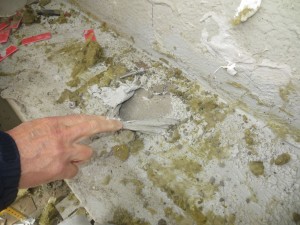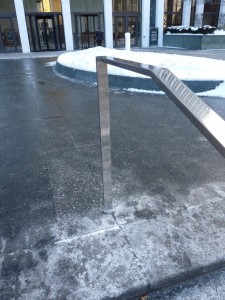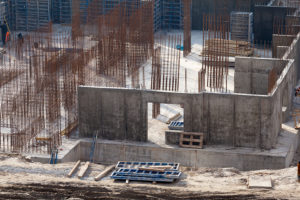Limestone at the base of a building façade is vulnerable to staining from various sources, including planting beds or soil adjacent to the wall, water or snow collecting against the building, and ice-melters used on sidewalks and paving.
+ Read More
|
Despite recent code changes to improve the energy efficiency and overall thermal envelope performance of the building enclosure, parapets can continue to be an enigma in the design process.
+ Read More
|
In response to greater focus on building envelope energy performance, insulation use in the exterior wall cavity has increased.
+ Read More
|
Salt corrosion is not only a problem near the seashore—in fact, there is a significant, and often unrecognized, risk in ‘inland’ areas where seasonal de-icing salts are regularly used.
+ Read More
|
Cast stone is a highly refined architectural precast concrete manufactured to resemble natural building stone. Its popularity was related to the rapid development of the portland cement and concrete industries in the late 19th century.
+ Read More
|
In the southeastern United States, a 12-story office building, constructed in the early 1930s, experienced uncontrolled water leakage through its mass masonry exterior wall.
+ Read More
|
One of the most critical (but often neglected) components in ensuring ‘watertightness,’ the roof assembly is typically installed early to protect the unfinished building from water penetration, enabling interior work to advance.
+ Read More
|
Elastomeric wall coatings (EWCs) are an important part of new and remedial construction, protecting cladding from water penetration. Assuming they are properly applied, premature failures of EWCs typically involve their manufacturing formulation.
+ Read More
|
Using the acronym ‘WRB’ is common, but the intended meaning is often misunderstood, as it can refer to either a ‘water’ or ‘weather’-resistive barrier, with the two having different performance expectations.
+ Read More
|
Air vapor barriers (AVBs) are critical in controlling air and moisture transport within building enclosure assemblies. Ignoring bulk water penetration, moisture-related issues experienced within the building enclosure are more commonly the result of moisture transport through air movement..
+ Read More
|
|
|














